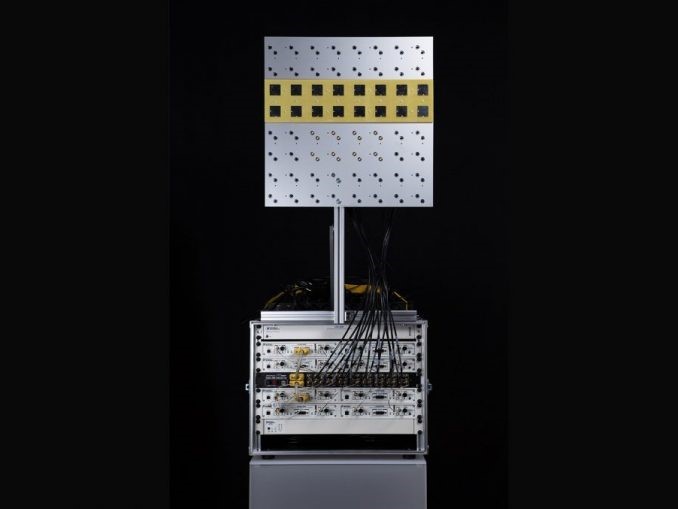In the MARCONI project, highly reliable and low-latency 5G wireless vehicle-to-infrastructure (V2I) communication links have been built up to enable autonomous vehicles to cooperate in a controlled manner by connecting vehicles to a mobile-edge cloud computing centre at the base-station location.
To cope with the challenging time-variant and non-stationary properties of V2I communication channels, the project investigated new algorithms that enable the application of massive MIMO systems in time division duplex (TDD) and frequency division duplex (FDD) configurations for vehicular communication links.
Measurement data of the radio propagation characteristics between multiple nodes and the massive MIMO base station in vehicular scenarios have been used to design a non-stationary geometry-based channel model for the numerical link level evaluation of massive MIMO transceiver algorithms for mobile nodes in vehicular scenarios. This data was crucial for the massive MIMO time-variant channel estimation, for prediction and feedback algorithms, as well as precoding techniques. All algorithms in MARCONI were finally tested in real-time on the AIT software defined radio (SDR) distributed massive MIMO testbed in real vehicular driving tests, in safety critical scenarios with up to 96 antenna elements for frequencies up to 6 GHz.
MARCONI achieved its main target of a real-time massive MIMO implementation, employing channel state information prediction to mitigate fading for vehicular scenarios.
Start: 01.09.2017
End: 31.12.2020
Goals:
Measurement of the radio wave propagation characteristics between multiple mobile nodes and the massive MIMO base station in vehicular scenarios. The measurement data is used to design a non-stationary geometry-based channel model for the numerical link level evaluation of massive MIMO transceiver algorithms for mobile nodes in vehicular scenarios. This data will be crucial for the massive MIMO precoding for time-variant channels. Here we will exploit the slow time-variation in the delay-Doppler domain to cope with mobile nodes providing a highly reliable and low-latency communication link. All algorithms in MARCONI will be tested in real-time on our software defined radio testbed with up to 96 antenna elements for frequencies up to 6 GHz.
Results:
Real-time massive MIMO implementation employing channel state information prediction to mitigate fading for vehicular scenarios.
Webpage: -
Funding:
FFG IKT d. Z.
Partners:
- Nokia Solutions and Networks Österreich GmbH
- AVL List GmbH




